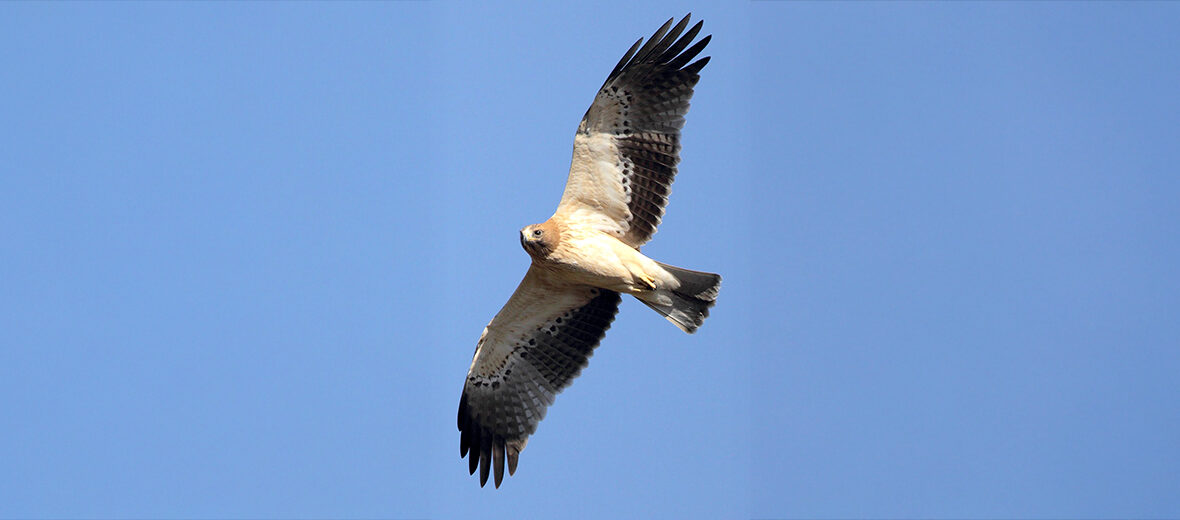
The booted eagle is a migratory bird of prey with a Palearctic and southern Asian distribution that can be seen wintering in the tropics of Africa. These raptors face the threats of habitat loss and destruction at the hands of residential and commercial developments, farming, ranching, logging, fires, and fire suppression; hunting; trapping; renewable energy; utility lines, which can result in electrocution; human intrusion on their nesting sites; and pollution. However, these birds are abundant enough to be listed as Least Concern by the IUCN. Their population trend is listed as stable.
First the Stats…
Scientific name: Hieraaetus pennatus
Weight: Up to 2.26 lbs.
Length: Up to 15.75 inches
Wingspan: Up to 4.33 feet
Lifespan: Up to 20 years
Now on to the Facts!
1.) These eagles number an estimated 195,000 wild individuals.
2.) They were formally described by the German naturalist Johann Friedrich Gmelin in his revised and expanded edition of Carl Linnaeus’s Systema Naturae in 1788.
3.) Recent genetic research has reclassified this species to the genus Aquila.
4.) However, DNA research has shown it forms a monophyletic clade with Ayres’s hawk eagle, Wahlberg’s eagle, little eagle, and the pygmy eagle and this clade is often treated as forming the genus Hieraeetus, and most reference lists currently use H. pennata.
5.) Their call is a shrill kli-kli-kli.
But wait, there’s more on the booted eagle!
6.) These eagles prey on birds, mice, rats, various other small mammals, and reptiles.
7.) Females lay up to 2 eggs that hatch in up to 45 days.
Did you know…?
It is thought that these eagles have been overlooked in Southern Africa due to the remote and secretive nature of their nesting sites.
8.) Chicks fledge in up to 75 days.
9.) Booted eagles are monogamous (mate for life).
10.) The Southern African populations were only recently discovered in the 1980s, suggesting that they migrated due to a changing climate and other environmental conditions.
Now a Short Booted Eagle Video!
Be sure to share & comment below! Also, check out the Critter Science YouTube channel. Videos added regularly!
Want to suggest a critter for me to write about? Let me know here.
Some source material acquired from: Wikipedia & IUCN
Photo credit: Juan Lacruz




